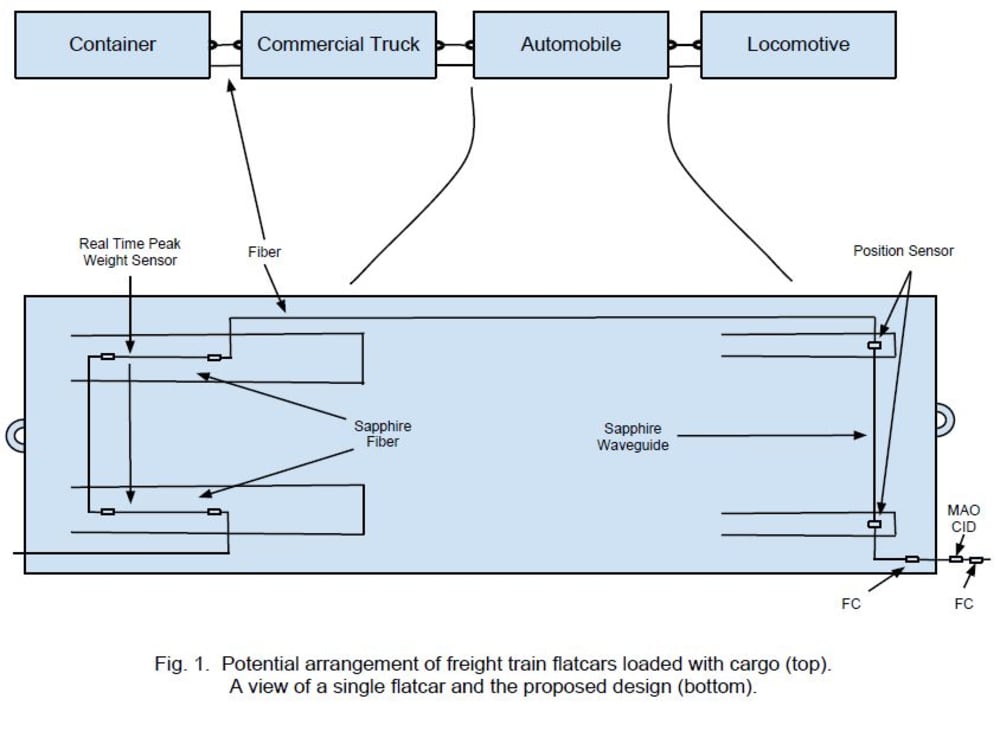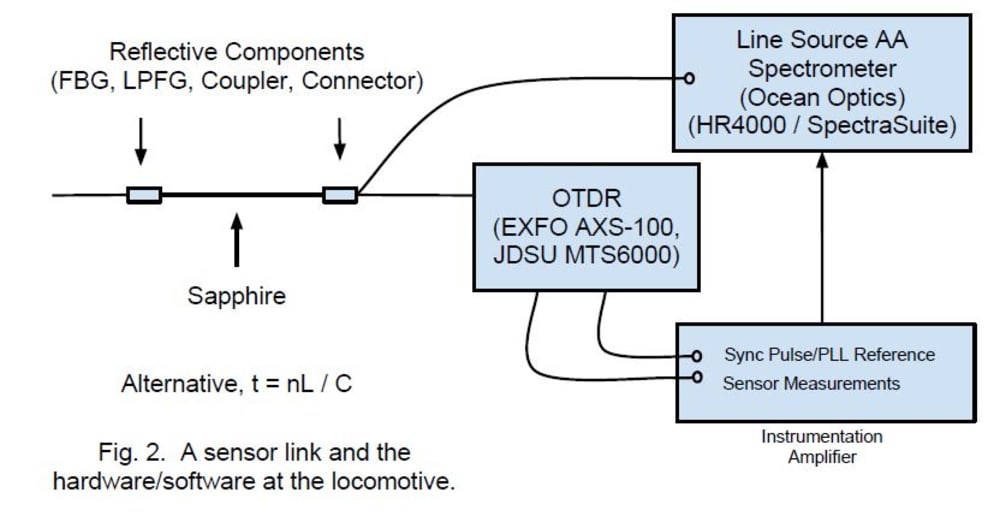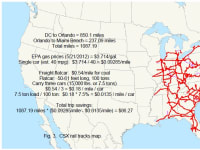Adding current fiber optic technologies to freight train flatcars, such as those by CSX, enable mass transportation for combined consumer vehicle traveling and cargo. Six major economic advantages arise. First, convenient loading of passenger vehicles allow use of locomotives and their fuel efficiency. As an example, tourists of Washington D.C landmarks traveling 850.1 miles to Disney World in Orlando, Florida, would spend $3.714/gallon according to the Environmental Protection Agency’s May 21, 2012 gas prices. As a comparison, CSX’s flatcars charge a coal cost of $0.54 per mile per unit, which is capable of carrying three passenger vehicles for a load of approximately 7.5%. With some negotiation, the tourists would see a charge of $0.0135 versus $0.0929 per mile (assuming 40 mpg). This technology would likewise open use of TGV-style bullet train locomotives, as well as those powered by diesel (approximately 11% fuel efficiency over gasoline).
A second advantage arises from the US Department of Energy. Since 1985, it has promoted Clean Coal demonstration projects. Thus, a path towards future research and development would continue to be supported to benefit the country’s fuel efficiency. This would be in addition to potential partners with the Department of Transportation and the Federal Emergency Management Agency. The latter’s interest may arise as the system provides convenient hurricane evacuation routes; while at the same time, it supports the agency in delivering their emergency services.
Other advantages of considerable importance involve nuclear, biological, and chemical weapon materials (NBC) sensing in open-air, mass transportation routes. Fourth, consumers may have lower insurance rates due to less traffic accidents. Fifth, it addresses the “range anxiety” of electric passenger vehicles by allowing battery charging while traveling; and, an automobile’s mileage limit might not be reached with the considerable number of nationwide train stations. Finally, this would promote a new transportation method where vehicles drive onto the flatcars for long trips; the freight train engineer gauges weight and charge from the locomotive; and they drive off at their destination.
The technology revolves around sapphire optical sensors interconnected by fiber optics, couplers, and connectors. As one of the hardest materials known, sapphire is the third hardest natural mineral. With optical transmission, a conversion has been made to correlate weight (pressure) from light intensity. By locating two components, preferably internal gratings to avoid environmental noise, the reflected signal to an optical time domain reflectometer (OTDR) marks the output with an impulse response. Utilizing the same OTDR, there will be an attenuation, between the two markers, due to the mode scrambling of light as pressure is applied to the sapphire. A linear relation is then translated into weight measurements by a computer. An instrumentation amplifier is placed prior to the computer to separate and identify the sensors.
A coupler simultaneously links the optical signal to an atomic absorption spectrometer. With the open-air waveguide, the containers are examined for NBC traces.
A modular, all-optical, container identification (MAOCID) is based on specific Bragg wavelength reflectance and grating period.
Like this entry?
-
About the Entrant
- Name:Jesus Chavez
- Type of entry:individual
- Software used for this entry:SpectraSuite
- Patent status:none








